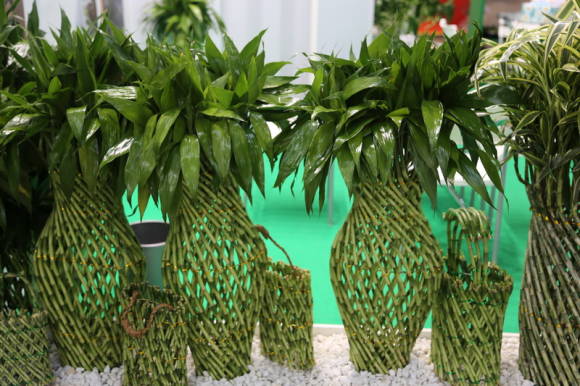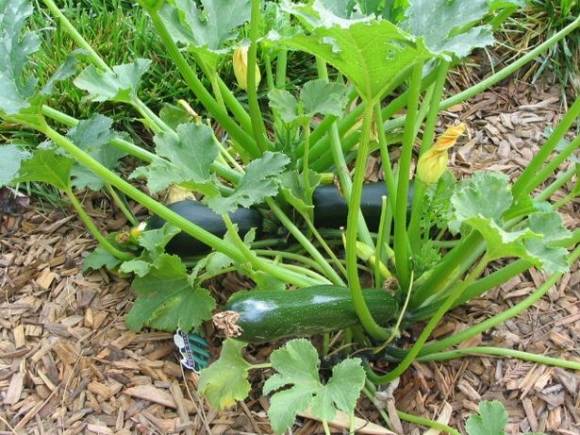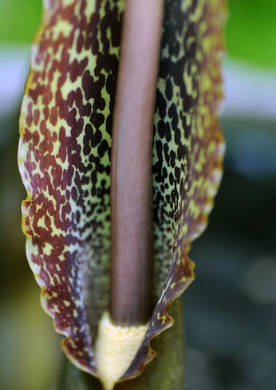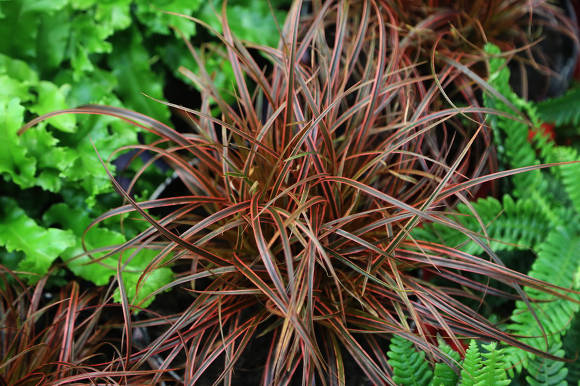
Allspice (Syzygium aromaticum (L.) Merill et L.M. Perry syn. Caratophyllus aromaticus L., Eugenia caryophylla Thunb., Eugenia caryophyllus (C. Spreng.), Eugenia aromatica (L.) Baill., And more rare Myrthus caryophyllus Spreng., Jambosacaryophyllus (Spreng.) Nied.) - a tropical plant up to 20 m high of the Myrtle family (Murtaceae).
Leaves are opposite, whole-edged, smooth, leathery, ovate, up to 12 cm long. Fragrant at a young age. The flower is a red receptacle and four white petals. The fruits are dark red, ovoid, 2.5 cm long and 1 cm thick.
The clove tree grows in a warm and humid climate with an annual rainfall of 1500-2500 mm. Height above sea level - up to 900 m. Seeds ripen in July - October, lose germination a week after harvest.
Homeland of the clove tree and spread throughout the world
The homeland of the clove tree is the Maluku Islands and the Southern Philippines. The plant is cultivated in Indonesia, India, Sri Lanka, Malaysia, Guinea, Madagascar. The main spice production (up to 80%) is concentrated in Tanzania, mainly in Zanzibar and Pemba. On the island of Pemba, clove plantations occupy most of the territory. And the Sultanate of Zanzibar and Pemba (1963-1964), which existed for a short time, even placed two carnation buds on the national flag.
History

The plant was mentioned 1500-1660 BC in Ayurvedic treatises. Then it was used for rheumatic pains, sciatica, and also as an antibacterial and antiparasitic agent. The trade of Imperial China and the Spice Islands dates back over 2,500 years. Moreover, it was more valued as a medicinal plant. In particular, it was recommended for freshening the breath and it was simply indecent to come to the imperial palace without chewing on a clove bud. It was widely used as a toothache medicine.
In Europe, especially in the Mediterranean, it has been known since pre-Christian times. During the time of the Roman emperors, the carnation was transported from Malaysia, through Ceylon, along the Red Sea to Alexandria and Constantinople. It is known that Emperor Constantine gave some spice to Pope Sylvester 1 as the greatest jewel. The presence of cloves in Germany in 973 was first mentioned by the Arab merchant and doctor Ibrahim ibn Yakub, who was surprised to find, among other well-known spices and cloves, on the market. Hildegard of Bingen (1098-1179) recommends cloves as a medicinal plant in his writings.
The Portuguese and the Dutch fought bitter wars for the possession of the spice islands and for the possession of a monopoly of trade. The Dutch managed to maintain a monopoly on the carnation trade until the 17th century. The French also decided to make their own business: in 1772 in Reunion, in 1786 in French Guiana, and in 1827 in Madagascar, clove plantations were established.
What is used

Harvesting begins with six-year-old plants. Ripe buds (slightly pink in color) are harvested by hand. The flower stalks are removed, the buds are blanched in boiling water and then dried in the sun.
The yield from one tree reaches 8 kg per year. If, when immersed in water, the buds are in an upright position, then their quality is good. With a horizontal arrangement of buds on the surface of the water, their aroma is low.
What do clove buds contain and how are they treated?
The buds contain about 15% essential oil. However, in some cases, its content can reach 20%. The main component is eugenol, which is about 70-90%. The oil also contains eugenol acetate (15%), a- and b-caryophyllene (5-12%). The listed compounds in total make up 99% of the essential oil. Usually, clove essential oil is obtained by steam distillation.

In addition, the buds contain fatty oil (10%), including about 2% triterpene fatty acids, tannins (up to 12% halotannins), 0.4% flavonoids (quercetin and kaempferol), phenol carboxylic acids and the bitter substance caryophylline.
Cloves stimulate appetite, aid digestion and have antiseptic properties. Clove oil is used in dentistry as an antiseptic and pain reliever. The oil is sometimes used externally for dermatomycosis of the feet.
One of the most powerful antiseptics is eugenol, which is the main component in essential oil. Acetyleugenol has antispasmodic properties. The oil, even in strong dilution, is active against the main test cultures - Escherichia coli, Staphylococcus aureus, Streptococcus.

Even the ancients used it to fight tooth decay and infections of the oral cavity and gastrointestinal tract. Until recently, dentists used essential oil to disinfect the tooth cavity during filling. The oil is active against hepatitis viruses, tubercle bacillus and amoeba disinteria. In tropical Asia, it is used for roundworms, cholera, tuberculosis. Improves digestion and reduces spastic pain in the gastrointestinal tract, stimulates blood circulation, a local analgesic, which in strong dilution is used to rub painful joints with arthritis, neuralgia, sprains. It is considered a good stimulant for fatigue. Chinese medicine recommends cloves for fatigue and memory impairment. In fees used for prostate adenoma and impotence.
Clove oil is used in the tobacco, perfumery and cosmetic industry, and pharmaceuticals. On its basis, deodorants are made to repel mosquitoes and mosquitoes.
Contraindications: The essential oil requires careful application under the supervision of an aromatherapist after an allergy test. May be irritating to skin. Used externally in strong dilution - 1 drop of essential oil to 20 drops of base oil.
For lovers of details - homemade recipes
With high pressure during menopause take 15 pcs. clove buds, pour 300 ml of warm water (39 o) in the evening, insist all night, and drink in the morning.
With the flu take 1 glass of good aged red wine, 5 pcs. cloves, 1 level teaspoon of cinnamon, 3 black peppercorns, a slice of lemon, orange and apple peel, 3 tablespoons of sugar. Boil everything under a lid over low heat for 10 minutes. Give the patient a drink at a temperature of 38.5 ° C and above.
For gourmets

Together with other spices, cloves are used to flavor chicken products, fish, some types of sausages, sweet marinades, pork dishes, sweets, almond cakes and, of course, gingerbread. Cloves are a part of spice mixtures: Western European and Indian "curries", Indian spice mixtures, Chinese "wuxiang-mian", etc.
Cloves are also used in the food industry of our country. It is put into canned food and snack foods, pickles, seasonings, tomato sauces "Spicy" and "Kubansky", sauces "Yuzhny" and "Vostok", mustard "Aromatic", "Russkaya", "Moskovskaya", "Leningradskaya", "Volgogradskaya ", In canned cucumbers and squash, nut jam. Cloves are added to spicy and pickled herring, sprat, herring, canned fish in tomato sauce. It is used to flavor eel in jelly, herring marinated with vegetables, fish and vegetable hodgepodge, hot smoked fish. The spice is used in the manufacture of red and white brawn, blood sausage, liver pâté, cheese sourdough and ice cream, bakery products.
Cloves are very popular in cooking. It is added to cold appetizers: marinated fish and aspic, lobio and satsivi. Bactericidal properties and rich aroma make it possible to use the spice in homemade meat products: sausages, corned beef, etc. Cloves are used in soups from game, pork, lamb (Georgia), potato, vegetable, mushroom, fruit, as well as fish soup and meat broths.
Spice is added to the second courses. Vegetables, cereals, pilaf are cooked with it. Cloves go well with meat. It is flavored with beef, veal, lamb, poultry, game. Russian cuisine is distinguished by the use of spices in hot mushroom dishes.
Cloves impart their aroma not only in hot but also in cold water. Therefore, it is used in marinades and sauces, and in combination with a wide variety of products. Cloves are also added to marinades for karski barbecue, veal, chicken and fish.Cucumbers, cabbage, peppers, pumpkin, melon, carrots, beets, cherries, black and red currants, lingonberries, etc. are pickled with spice. Cloves are less commonly used in pickles. It is flavored with salted mushrooms and salted watermelons.
Cloves are put in jam and dough. It gives a piquant aroma to drinks. The spice is added to grog, punch, mulled wine, coffee, cocoa, sbiten. Flavored with cloves of plum, apple and lingonberry juices. Norms for setting cloves: in mushroom marinades - 2 g per 10 kg of mushrooms, in fruit and berry and vegetable - 3-4 g per 10 liters of filling; in dough and curd pastes - respectively 4-5 and 2-3 kidneys (in ground form) per 1 kg, respectively; in compotes, soups, broths - one kidney, in meat dishes - one or two kidneys per serving. When adding other spices, the rate is slightly reduced. Cloves are added to the dough and minced meat before heat treatment; in meat dishes - 10-15 minutes before readiness; in broths, soups, compotes - in 5 minutes.
A separate topic is spicy mixtures and sauces with cloves. It is included in a traditional Chinese five-spice blend along with star anise and curry. It is very widely found in mixtures of the Maghreb countries - ras el hanut with cubeb pepper (Morocco), galat dagga (Tunisia), berbere with paprika (Ethiopia). And finally, the Anglo-Indian symbiosis - Wostershire sauce, in which cloves are combined with garlic, tamarind, paprika or chili.
In Indonesia, cloves are added to tobacco and, by the way, this is what almost 50% of the harvest is spent on.








